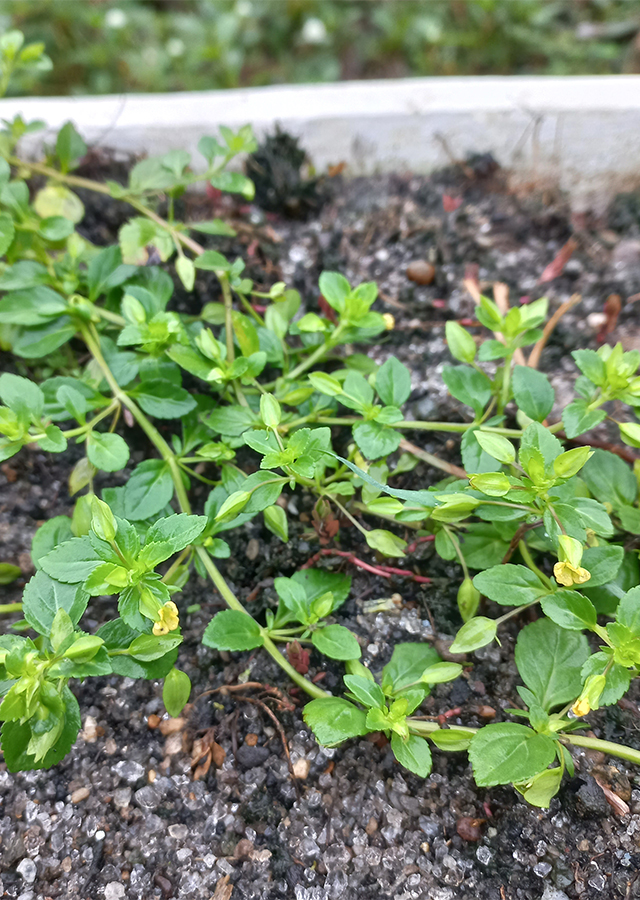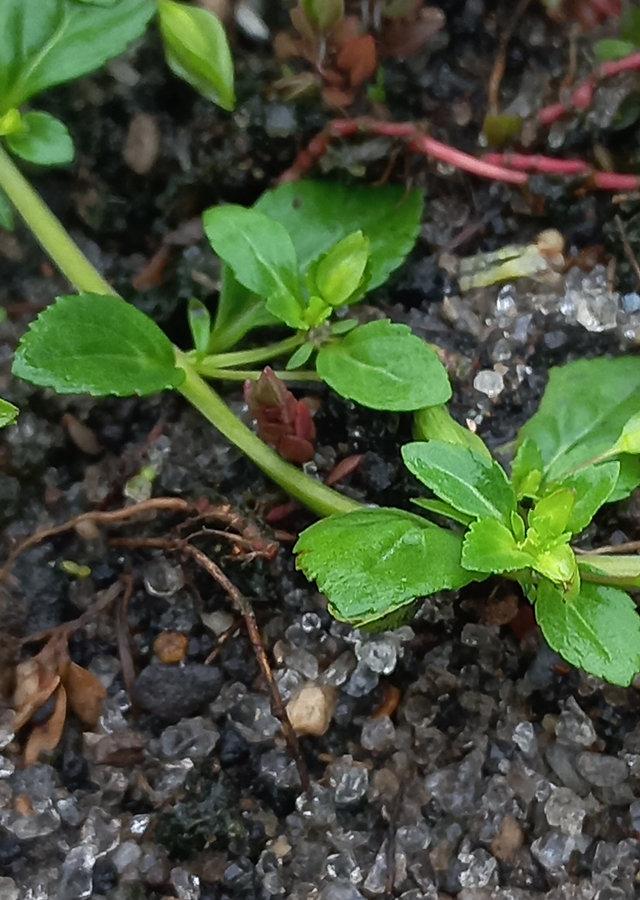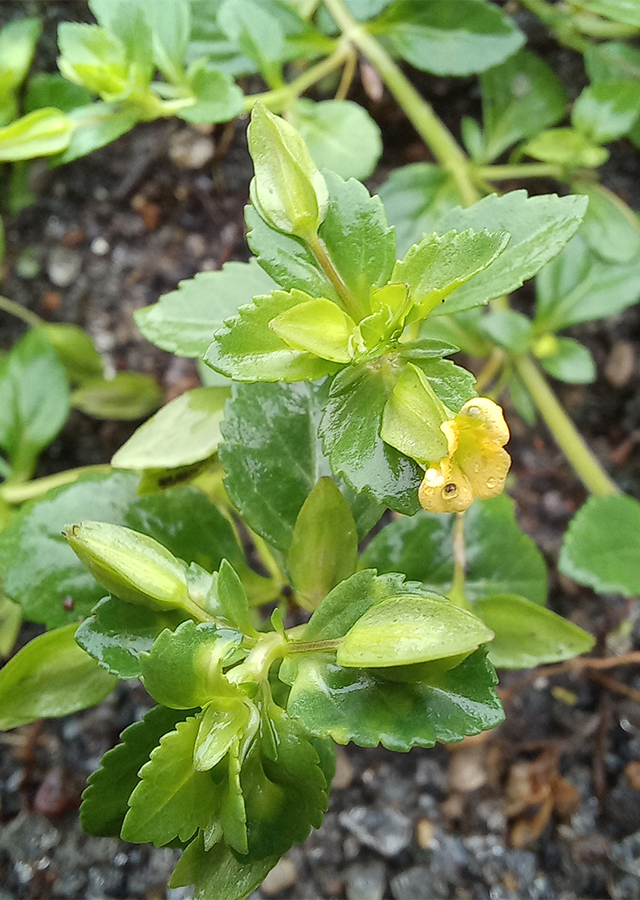Baby Jump Up
Mecardonia procumbens (Mill.) Small
Plantaginaceae
Location in our garden
Beneficial Weed



Synonym
Lindernia dianthera Sw.
Microcarpaea americana Spreng.
Bacopa chamaedryoides (Kunth) Wettst.
Habitus
Herbaceous. An annual or perennial herb, small, small, low, sprawling to 40 cm wide.
Part Used
Leaves
The Whole Plant
Growing Requirements
Full Sunshine
Need Shade
Habitat
Riverbanks
Forest
Grassland
Terrestrial
Overview
Mecardonia procumbens is native from the southern USA to Argentina but is already recorded as naturalised in Africa, India, Indonesia (Java), Japan and Taiwan. It has become naturalised across much of the warmer parts of the world. Common weed of lawns, gardens and agriculture. In Mexico, the plant is traditionally used to heal all kinds of wounds. This ethnobotanical application is repeated until the wound is healed completely.
Vernacular Names
Metatera (Mexican).
Agroecology
Found in riparian, shaded open, moist woodland edges.
Morphology
- Root - short fibrous roots.
- Stem - erect or prostrate glabrous ephemeral herb, often branched from the base, rooting at lower nodes. Stem sharply quadrangular and glabrous.
- Leaves - light green, fleshy, opposite, toothed, and have pinnate venation, glabrous, without or with short petioles, elliptic to ovate-elliptic, 10-25 x 6-12 mm.
- Flowers - yellow, axillary, solitary; pedicel thin, glabrous, 4-6 mm long, bracts 2-4 mm long, linear, mostly entire, located at the base of the pedicel. Sepals free, with acute base, glabrous, 5 -lobed, 6-10 mm long; the 3 outer lobes ovate-oblong, attenuate at apex, subobtuse at base, 8.5 x 4.5 mm, the 2 inner ones shorter, 5 x 0.4 mm, much narrower. Stamens 4, didynamous, partly adnate to floral tube. Ovary superior, narrowly ovoid; curved at apex. corolla bilabiate, yellow with purple lines on upper lip, slightly longer than the calyx, 7-7.5 x 6 mm; upper lip emargenate, tube 5-5.5 x 2-4 mm.
- Fruit - capsule obscured by persistent sepals, narrowly ellipsoid, with 2 valves, glabrous, 5-6 mm long, dehiscent loculicidally and septicidally from apex, calyx accrescent, the outer sepals becoming 9 mm long and 5 mm wide.
- Seeds - numerous, areolate-reticulate, yellow or greenish brown, oblong with obtuse or truncate apex and subobtuse base, 0.3-0.8 x 0.2 mm long.
Cultivation
Generatively propagated by seed.
Chemical Constituents
No found data on this. Need further research.
Traditional Medicinal Uses
- Plant acts as neuro-stimulant and brain stimulant.
- The plant is used to heal all kinds of wounds. The whole plant is boiled in one liter or water. The infusion water is taken while the wound is external, the affected part is also washed and the boiled plant is placed in a compress and applied externally.
Part Used
Reference Sources
- Australian Tropical Rainforest Plants.(2020). Mecardonia procumbens (Mill.) Small. https://apps.lucidcentral.org/rainforest/text/entities/mecardonia_procumbens.htm. 05-03-2022.
- Chen, L.M.J., Ho, B.C., Choo, L.M., and Koh, S.L. (2018). Additions to the Flora of Singapore, new and overlooked records of naturalised plant species (1). Gardens' Bulletin Singapore 70 (1): 94-97. 2018 91 doi: 10.26492/gbs70(1).2018-09.
- Florida Foraging (2017). Baby Jump Up. https://www.floridaforaging.com/plant/mecardonia-procumbens. 05-03-2022.
- Kew Royal Botanic Gardens. (No date). Mecardonia procumbens (Mill.) Small. https://powo.science.kew.org/taxon/urn:lsid:ipni.org:names:155661-2. 05-03-2022.
- Saxena, S., and Rao, P.B. (2018). Invasive Alien Plants: Valuable Elixir With Pharmacological and Etnomedicinal Attributes. International Journal of Trend in Scientific Research and Development, 2(3): 2079.
- The World Flora Online. (2018). Mecardonia procumbens (Mill.) Small. http://www.worldfloraonline.org/taxon/wfo-0000451355. 05-03-2022.


